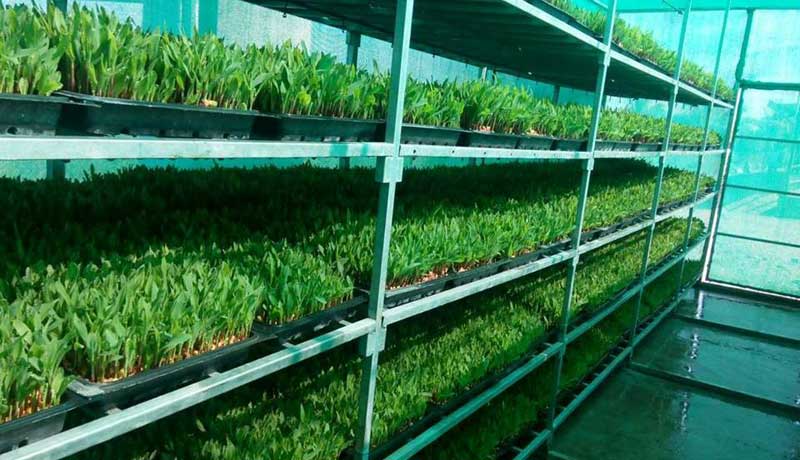How to Grow Hydroponic Fodder in Kenya.
Green fodder is essential to feed livestock, but with the reduced availability of land and lack of water, It is becoming difficult to produce the required quantity of green fodder throughout the year. Also, the lack of quality fodder hampers the growth production, and Reproduction of livestock.
In this article we will learn how to Grow Hydroponic Fodder in Kenya in easy steps; it will help you solve the green fodder problem.
Hydroponic fodder is produced by growing seeds without soil, and with very little water; within six to seven days, the seeds will sprout and the seedlings will grow up to 30-35 cm tall and provide highly nutritious fodder.
Advantages Of Hydroponic Fodder
1) Nutrient Value
Hydroponics fodder has more nutrients than traditional fodder dry food or grain. It contains high carbohydrates, minerals, and vitamins.
2) Time to grow
Compared to traditional fodder, which often needs up to two months to grow, you can grow hydroponic fodder in just one week.
3) Less water requirement
Compared to conventional fodder production, it required less water for hydroponic fodder production. Only 3 to 4 liters of water is necessary to grow one kilogram of hydroponic fodder; on the other, for traditional fodder, approximately 70- 100liter water is required.
4) Easy daily production
Hydroponic fodder can be produced regularly throughout the year, even in ASAL region of Kenya where there is water problems.
5) Chemicals or pesticides
It does not require any chemicals or pesticides to grow
6) Less workforce and Transport cost
It needs less workforce and transport cost as most of the farmers grow hydroponic green fodder near the livestock shade.
Construction Of a Hydroponic Fodder System in Kenya.
To grow good quality fodder, you need to be able to control the temperature and humidity. The fodder easily grows in semi-controlled environmental conditions with a temperature range of 15-32 °C and relative humidity of 80-85%.
Also, control light is needed to grow fodder, so you need to build a small shed net or a low-cost greenhouse.
To make a shed net or a low-cost greenhouse, you can use a bamboo log, iron rod, or plastic pipe for structure construction purposes also, and you require a shade netting or gunny bags to cover this structure.
- be too high because it becomes difficult to spray water and removes the trays.
- Keep enough space between two layers to easily water the seeds; also, create a slight slope for each layer to one side of the rack; this helps easily and quickly water to drain from the trays.
- Make a small drainage line under the slope side of a rack to properly drain out water.
The Hydroponic Fodder Production Process
use only good qualities of seed for hydroponic fodder production; never use broken or unhealthy seeds as these will not germinate and grow properly.
You can use maize, pulses, wheat, and horse gram seeds to make hydroponic fodder but do not use pearl millet and sorghum seeds because these sprouted leaves contain poison that can harm your livestock.
Mostly farmers use Maize seeds to produce hydroponic fodder. In cold climatic conditions, wheat and oats seeds are good, while in hot climatic conditions, maize seeds are suitable for hydroponic fodder production.
- conditions, after 4 hours, it helps maintain moisture.
Always maintain cleanness in the shed; it helps to reduce fungus, mold development chances.
Please do not disturb the trays’ sprouted seeds until they are harvesting, which influences the fodder’s growth.
Within seven days from one tray containing one kilogram of maize seed, you can produce about eight kilograms of fodder.
When preparing hydroponic fodder to make the rack according to your fodder need, if you required every day five trays of fodder for seven days, a prepare a shade that accommodates 35 trays.
Feeding Of Hydroponic Green Fodder

In six to seven days, the fodder is ready to harvest, take out fodder slabs from the tray, and cut them into small pieces before feeding it to the livestock, so it is easier for the animals to eat the fodder properly.
Avoid keeping the fodder for more than nine days in the trays because, after nine days, the nutrient value of fodder starts to decrease slowly, and fiber starts to develop.
Give this fodder to livestock along with other food and dry fodder from the total quantity of fodder.
Farmers give the combination of half a hydroponic fodder and half dry fodder.
Hydroponic fodder is very soft, nutritious and tasty plus animals enjoy it.
Conclusion
For sustainable dairy farming, quality green fodder should be fed regularly to dairy animals. Hydroponic fodder is a good option in front of the farmer because it grows fast, it contains a high nutrient value, and the most important thing is animals like to eat.







0 Comments